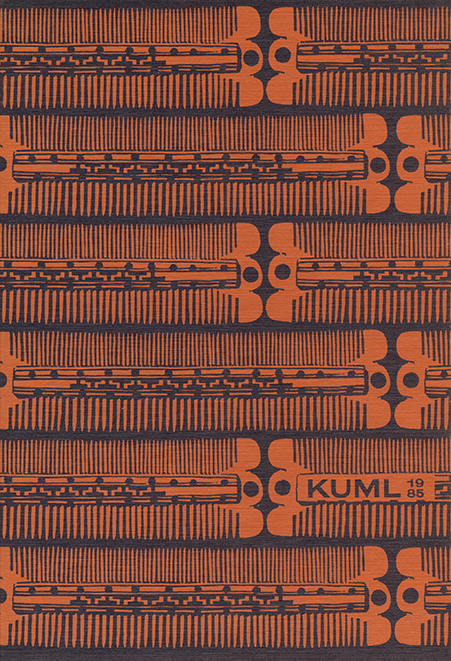The Worsaae-Medal
DOI:
https://doi.org/10.7146/kuml.v33i33.109697Keywords:
Karl Kersten, Worsaae medalAbstract
KARL KERSTEN THE WORSAAE MEDAL
16th May 1985
The Jutland Archaeolcigical Society's Worsaae Medal is "awarded on occasion, at the discretion of the committee, for special services to Nordic archaeological science". "It may be awarded to Danish and foreign scholars" and "the award carries with it honorary membership of the Society".
It is today a highly deserving scholar, and a foreigner, who receives the award: Professor, dr. habil Karl Kersten, former director af Landesmuseum für Vor- und Frühgeschichte at Schloss Gottorp. If the address had not been Gottorp, we, who know the extent of Karl Kersten's work, would often forget his foreign affiliations -but never his importance to Nordic archaeological science.
His interest for Nordic archaeology began almost before my generation saw the light of day, and still Kersten's days -and often his nights, too- are devoted to Nordic and especially Danish prehistory.
While Danish archaeology's Grand Old Man - Sophus Muller - still frequented the National Museum as an extremely vital pensioner, in the early nineteen-thirties, the young student Karl Kersten was studying its Bronze Age collections. And in 1935, at the age of 26, Kersten presented his doctoral thesis "Zür älteren nordischen Bronzezeit", where the regional culture groups of the Nordic Bronze Age were differentiated. This study was to be a foundation for the understanding of cultural conditions in the period and is still a necessary standard work.
In the following decades, Kersten's production was to a greater degree marked by his duties as reader, later professor, at the University of Kiel, and director of Landesmuseum for Vor- und Frühgeschichte first in Kiel, later in Schleswig. Here he produced a long series of Landesaufnahmen -complete presentations of finds and prehistoric monuments in SchleswigHolstein: Kreis Steinburg in 1951, Lauenburg in 1958, the North Frisian Islands in 1962/63, besides a work on "Die ältere Bronzezeit in Pommern" from 1958 -in addition to numerous articles touching on all the prehistoric ages: on bog corpses, the Single-grave culture, the mortuary houses of the Bronze Age, and many other subjects, published in the periodical "Offa", which is Schleswig-Holstein's pendant to KUML, edited by Kersten.
Denmark's Bronze Age was, however, not forgotten -on the contrary. An old dream of publishing all the Early Bronze Age finds from Denmark and the northwestern parts of Germany was taken up in the middle of the 1950s and the work initiated by arrangement with the director of the National Museum, Johannes Brøndsted.
For many years, Kersten's staff were permanently occupied at the National Museum and other Danish museums, and Kersten himself could for several years be found day and night in the offices, concentrating on the reports on the thousands of finds. The first of the 18 volumes which this great work will comprise was issued in 1973, and so far 7 volumes have been published; 8 of the remaining 11 volumes are at the manuscript stage and the volume on Ribe County, which will be vol. 8, is in print. The actual publication occurs in a collaboration between the museum at Schloss Gottorp and the National Museum.
The likes of this publication are probably not found anywhere else: it is a gold-mine for all students of the Bronze Age and will be so for generations to come.
This production alone is sufficient to merit several medals, for both its extent and its quality. But there are other sides of Karl Kersten's work which need to be emphasized. My first encounter with Karl Kersten -though not in person- occurred in my first years as a student just after the end of the war, when we were going through several years' journals at the National Museum. For the years 1940-45 we encountered innumerable reports from Karl Kersten on prehistoric monuments which were threatened in connection with military construction work such as aerodromes and fortifications of all kinds.
Doggedly and systematically he obtained this information and obtained passes for the archaeologists of the National Museum to the otherwise wellguarded military areas, so excavations could be carried out. It is unlikely that anything similar has occurred in other parts of the world under such circumstances.
No one can doubt the appreciation engendered, and a concrete manifestation of this was Karl Kersten's promotion to Knight of the Dannebrog. The hand of friendship extended from Schleswig was later also to include one of our national monuments -Danevirke- through the establishment of a German-Danish committee for the preservation and study of this mighty rampart at the base of Jutland. This led among other things to the extensive investigations from 1969 to 1975 carried out in collaboration between the museum at Schloss Gottorp and Prehistoric Museum, Moesgård, the results of which have been published by the Society.
Karl Kersten's crowning glory has been kept until last -the creation of the Museum at Schloss Gottorp, a former ducal residence. As director of the museum in Kiel -Denmark's oldest provincial museum established at the instigation of Chr. Jürgensen Thomsen himself in 1831 -Kersten sought a worthy setting for its unique collections, after the old building was gutted by fire in 1944. His choice fell on Scloss Gottorp.
After a long and hard political tug-of-war with the government in Kiel, Kersten was victorious. The castle was won, as the folk-song says, and is now the home of Schleswig-Holstein's fine Landesmuseum.
It is a pleasure and an honour to award Karl Kersten the Worsaae Medal of the Jutland Archaeological Society and welcome him as honorary member.
Poul Kjærum
Downloads
Published
How to Cite
Issue
Section
License
Fra og med årgang 2022 er artikler udgivet i Kuml med en licens fra Creative Commons (CC BY-NC-SA 4.0).
Alle tidligere årgange af tidsskriftet er ikke udgivet med en licens fra Creative Commons.


